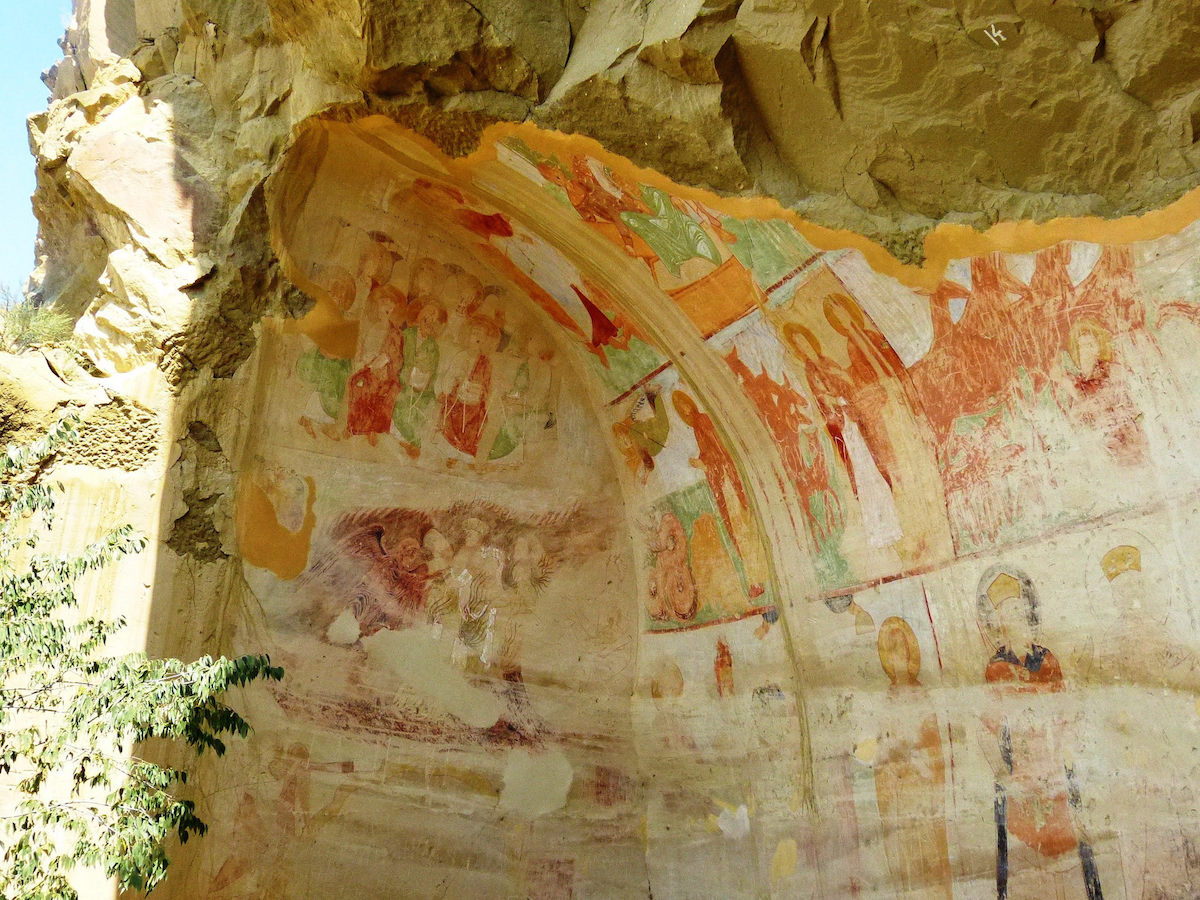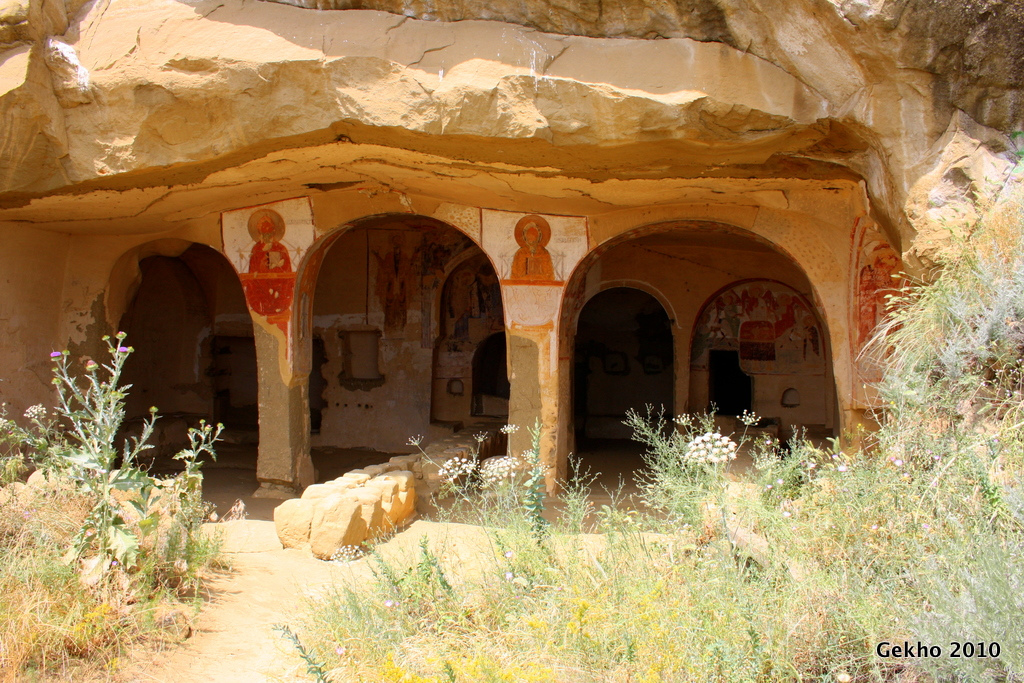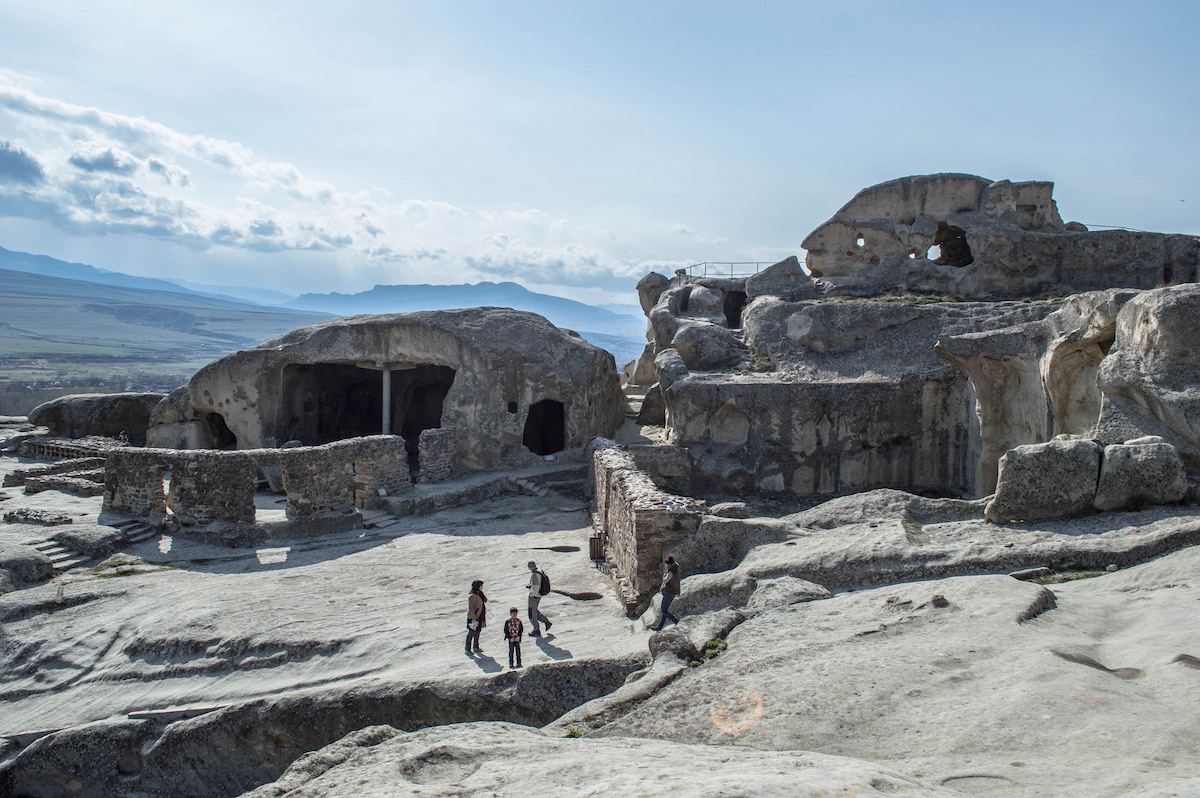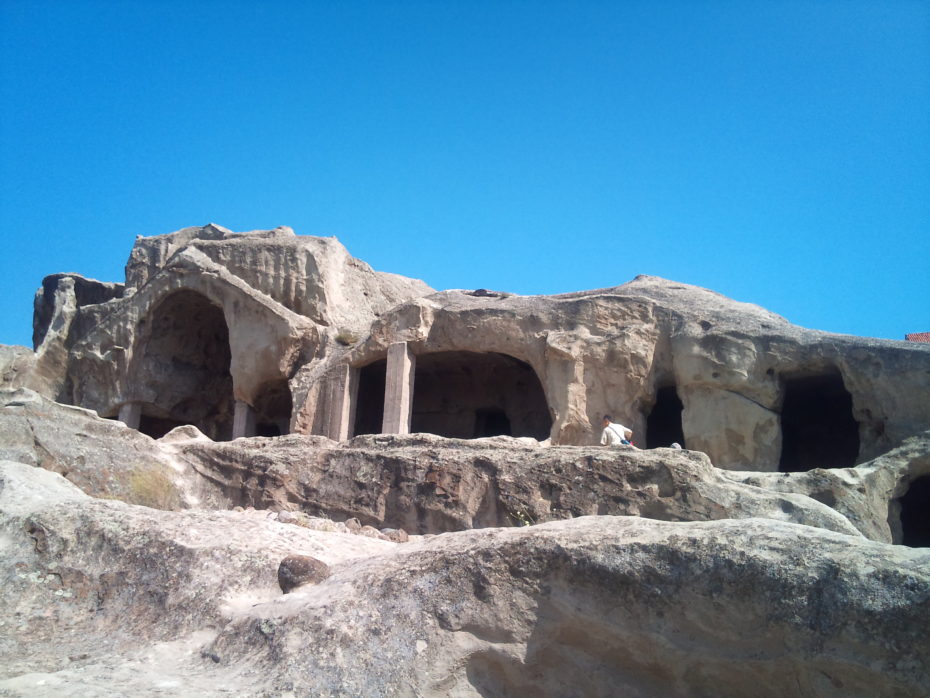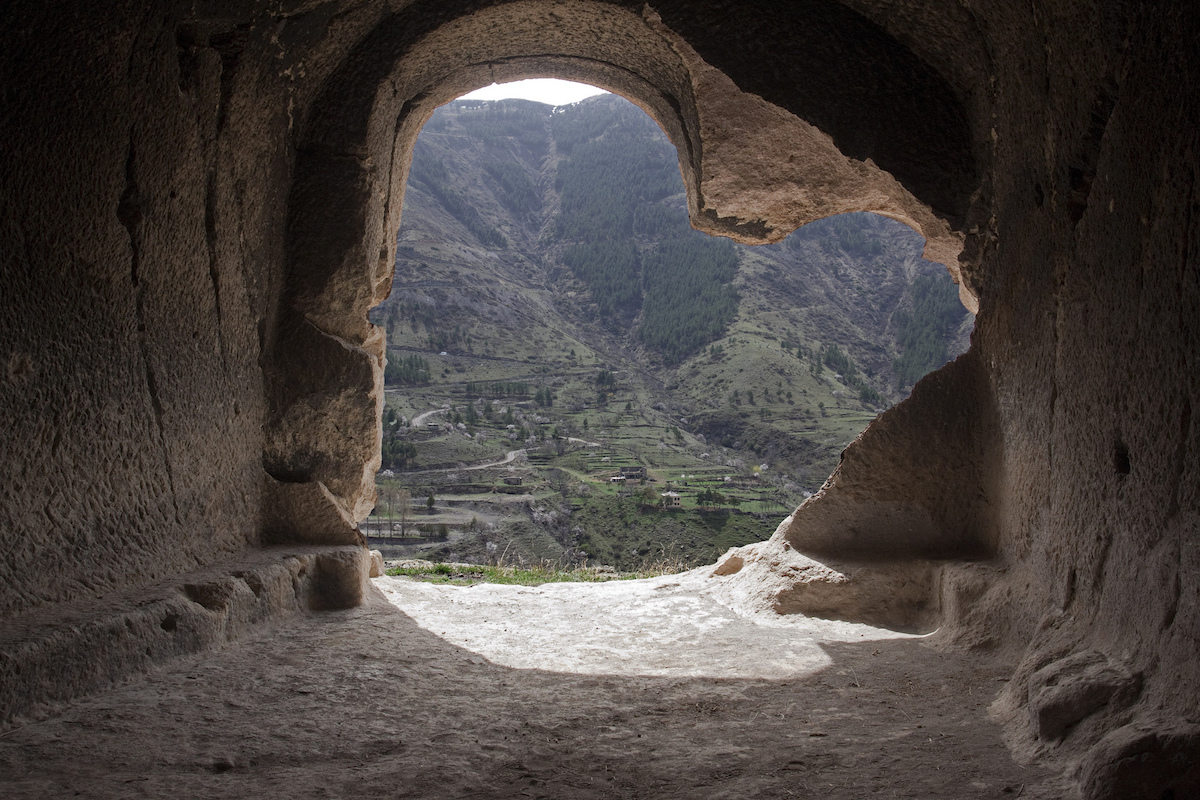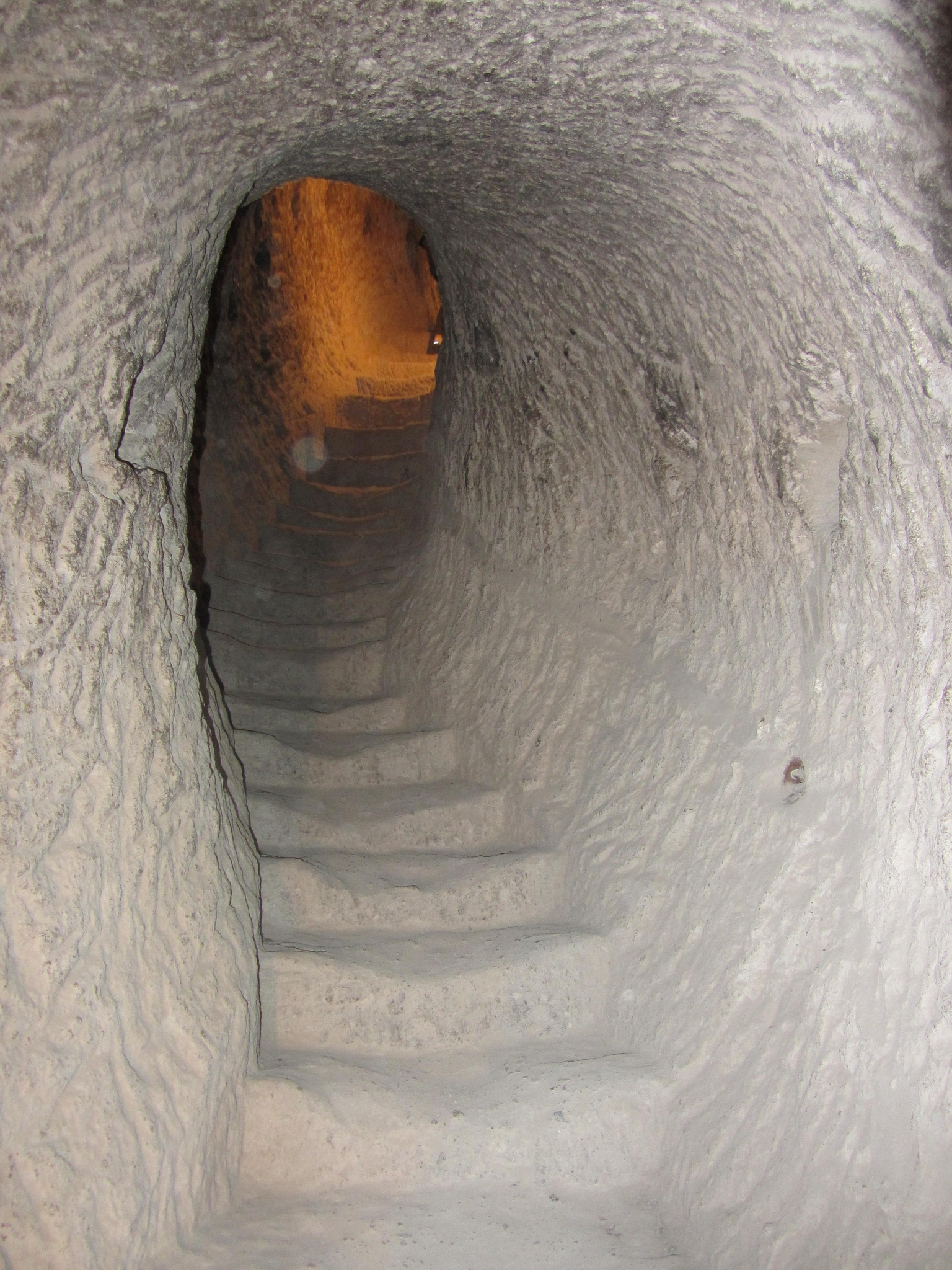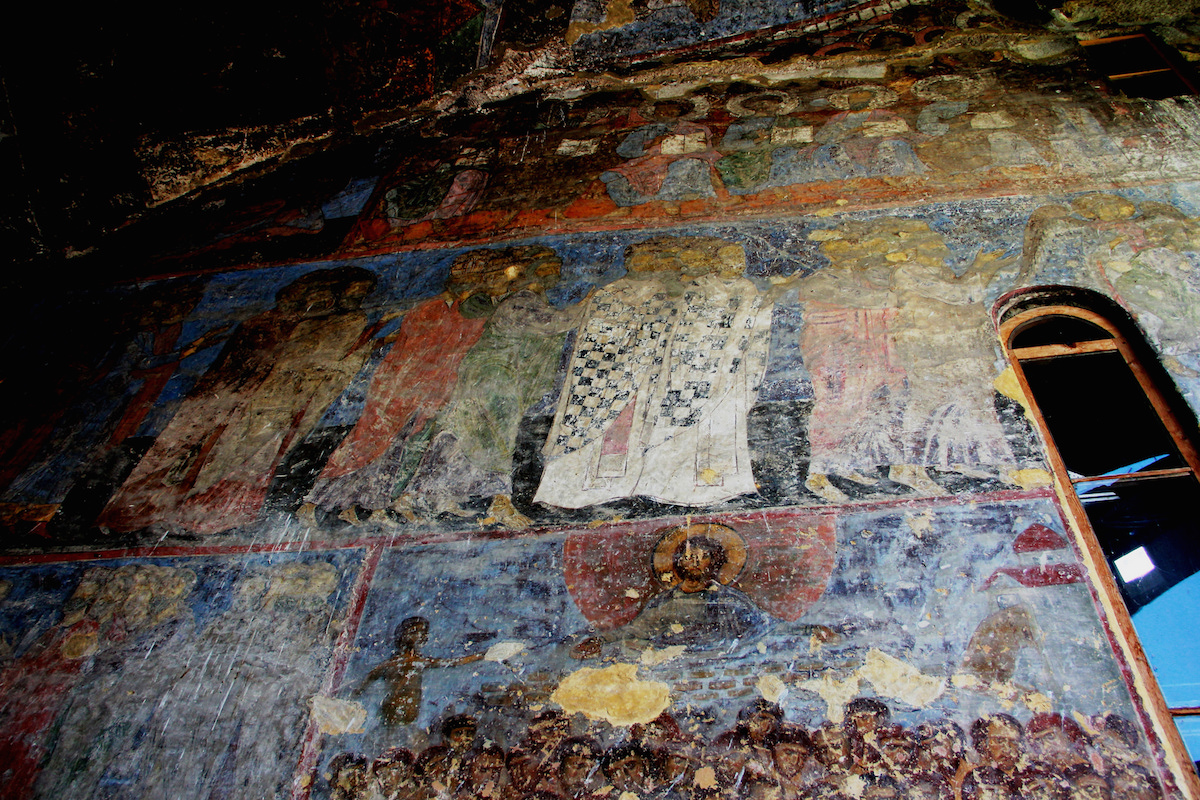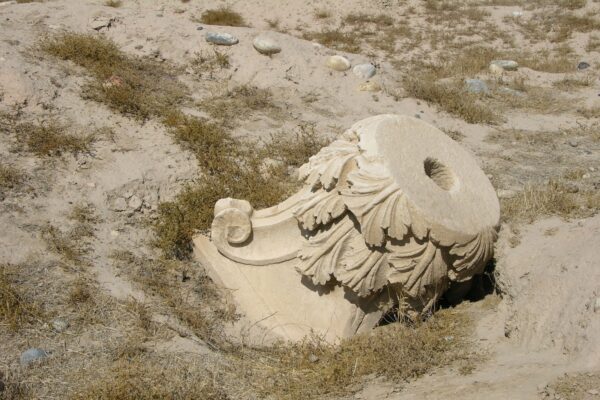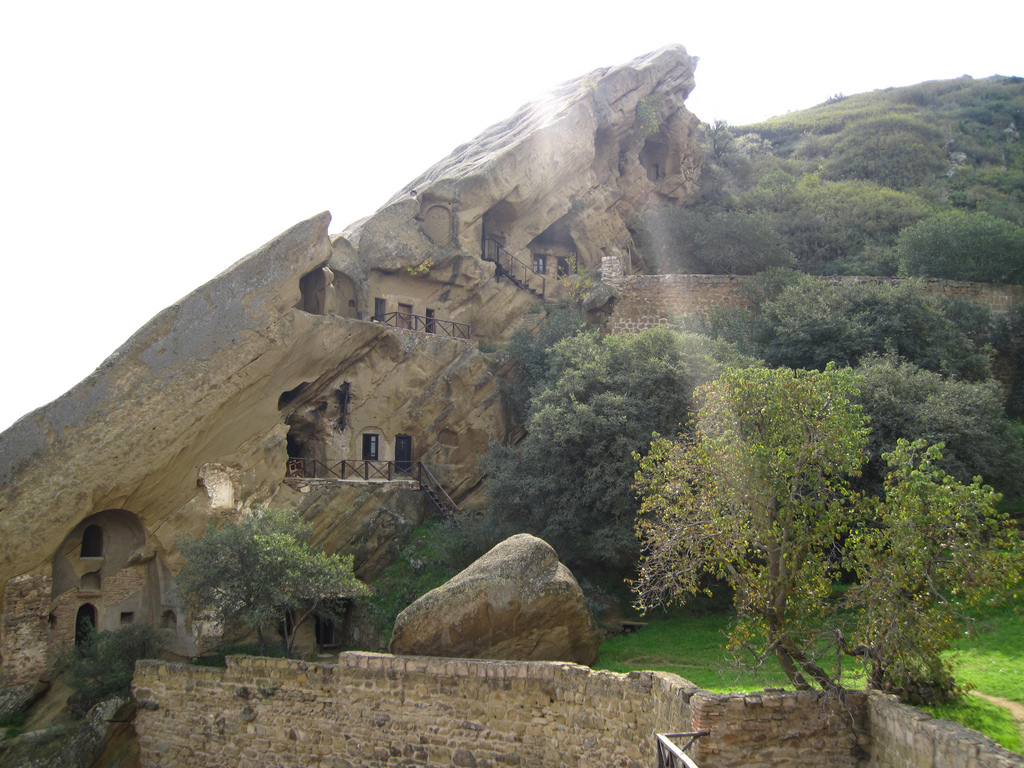
© Gvantsa
From the top of the ridge, a dusty wind blows south, sweeping down and across the endless desert-like plains in Azerbaijan. A narrow path cuts through the dried up shrubbery that shakes with each passing of stamping feet (recommended to scare away poisonous snakes). A rusty railing cuts down the already narrow path marking the border between Georgia and Azerbaijan. At the top, carved into the ridge, is a group of abandoned caves hiding under the hanging rock, sheltering one of Georgia’s best art treasures – the frescos of the Davit Gareji school…
A Cave Monastery in the Desert: Davit Gareji
Better known as Lavra, this rock-hewn monastic complex originates all the way back to the 6th century and is still home to a group of reclusive monks who inhabit its arid cells to this day…
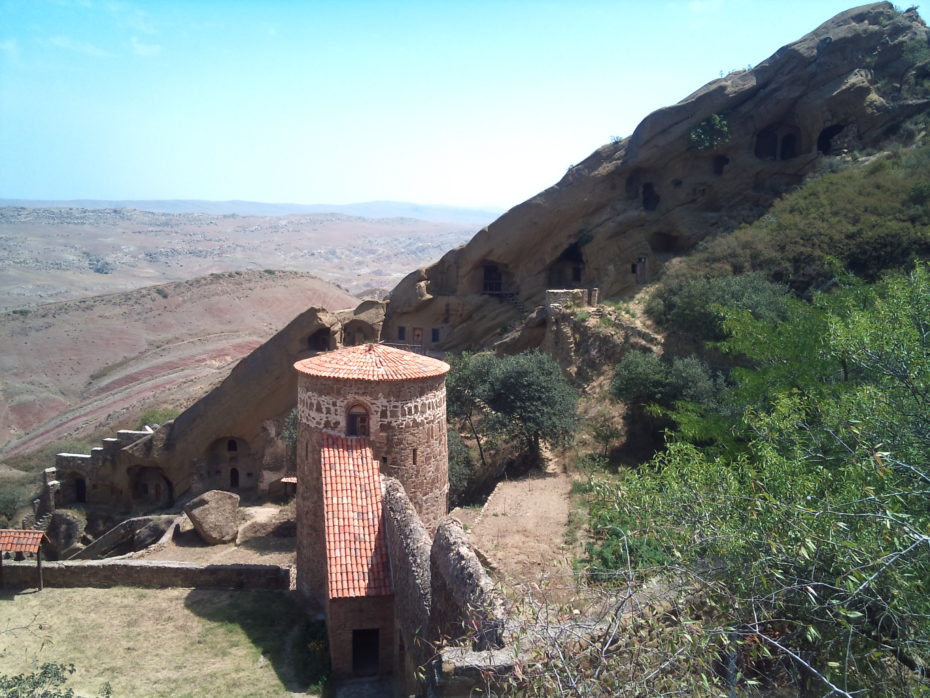
Lavra, part of the Davit Gareji monastic complex, is still inhabited by reclusive monks © Jennifer Walker
The complex was founded by St. David Garejeli, one of the 13 ascetic Syrian fathers who came to Georgia from the Middle East to spread the word of Christianity.
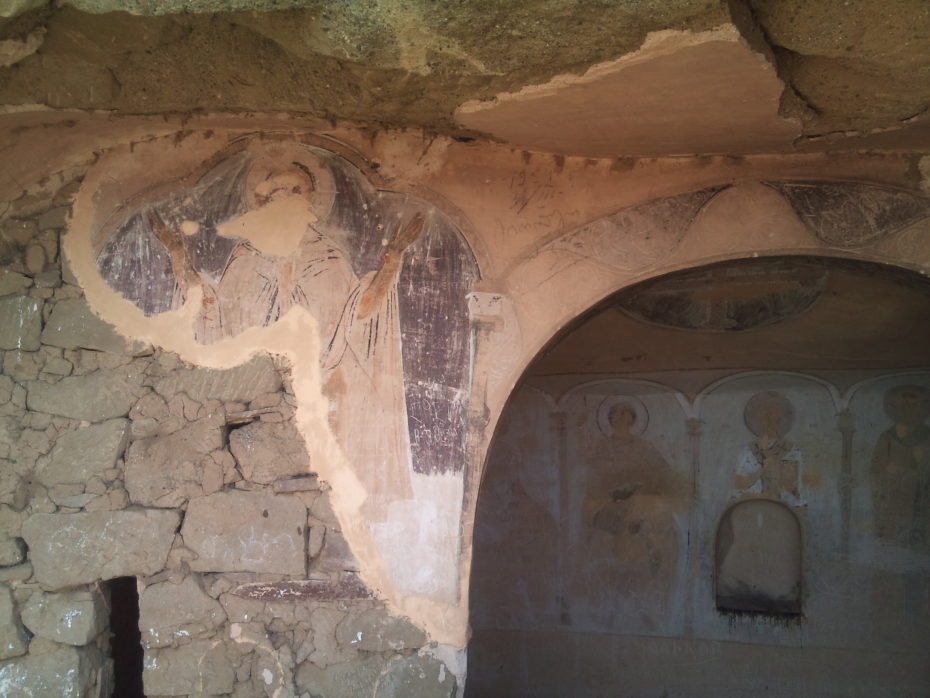
Some of the frescoes in Udabno depict the lives of Georgian saints.
This cave monastery became Georgia’s sacred spiritual and cultural centre and home to the once flourishing Davit Gareji fresco school. You’ll find hundreds of cells alongside refectories, churches and living quarters carved into the rock, some of which still carry their original frescoes depicting the lives of Georgian saints.
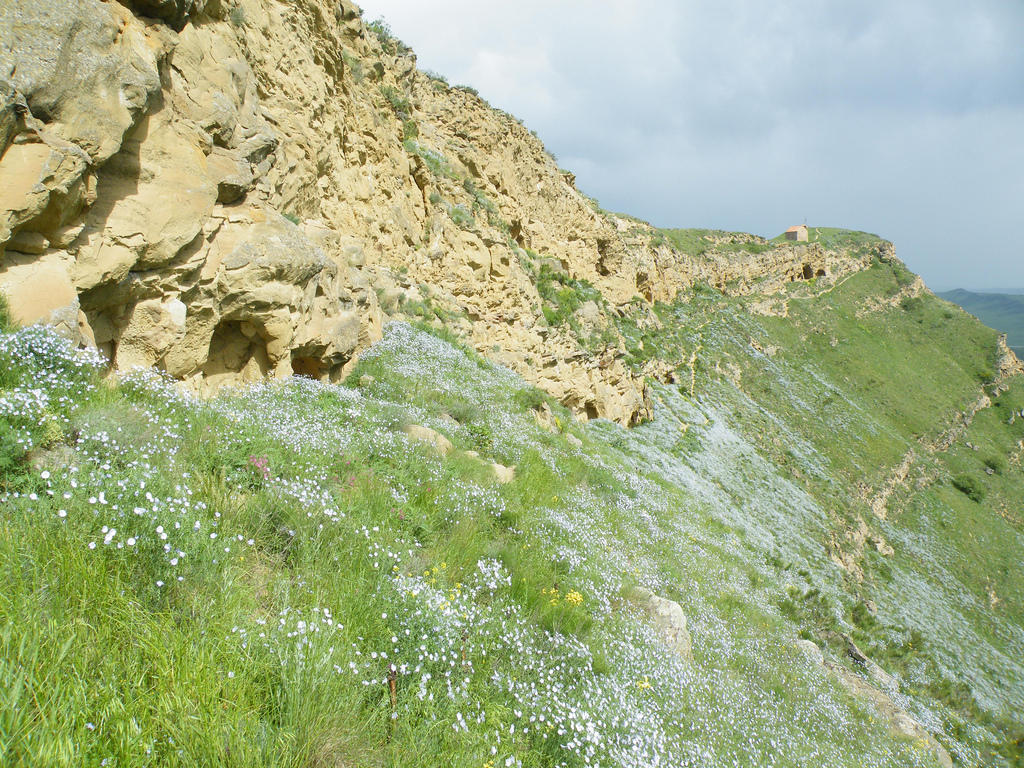
© Louisa
Over time, the cave culture spread across the area to nearby mountains, and separate cave monasteries were built, including Udabno, carved out between the 8th-10th centuries. This 500 meter-long network of caves is connected only by a narrow footpath, cut in the middle by a badly drawn up Soviet-era border. One wrong step and you could fall down the side of the mountain into the desert below. And if get lost on the path trying to find your way back? You may accidentally cross into Azeri territory without knowing it. But at least the kalashnikov-wielding border guards in Azerbaijan are friendly and speak good English, keen to put you back on the right path to Lavra.
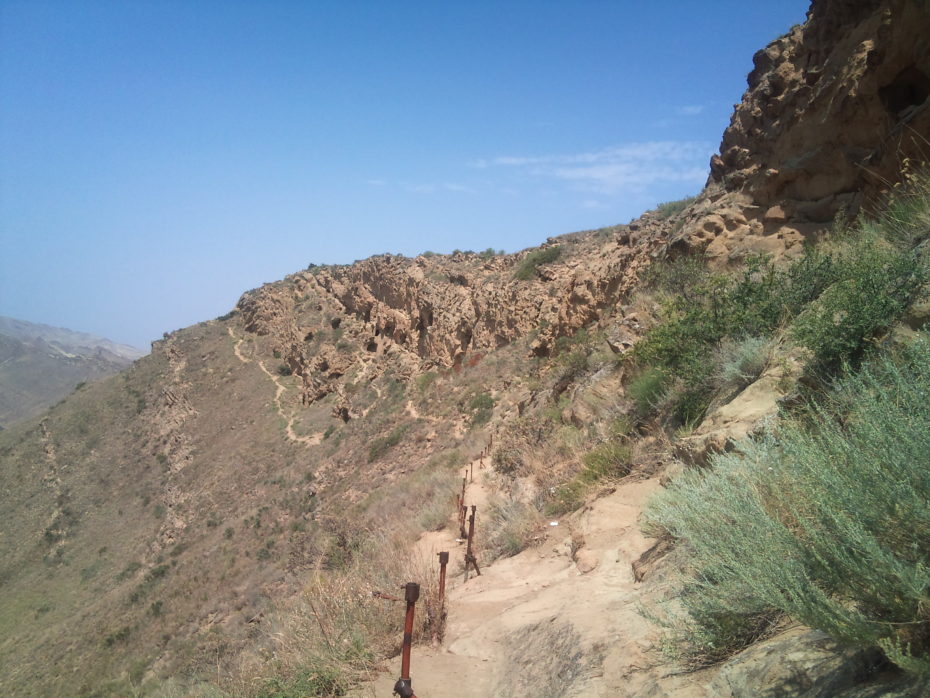
Udabno lies hidden up on the ridge, only this narrow path takes you there © Jennifer Walker
Today much of the monastery’s site lies abandoned. During the Soviet era, much of the monastery was used as a military training ground since its terrain was similar to that in Afghanistan, and its frescoes became part of the target practice for the Soviet army.
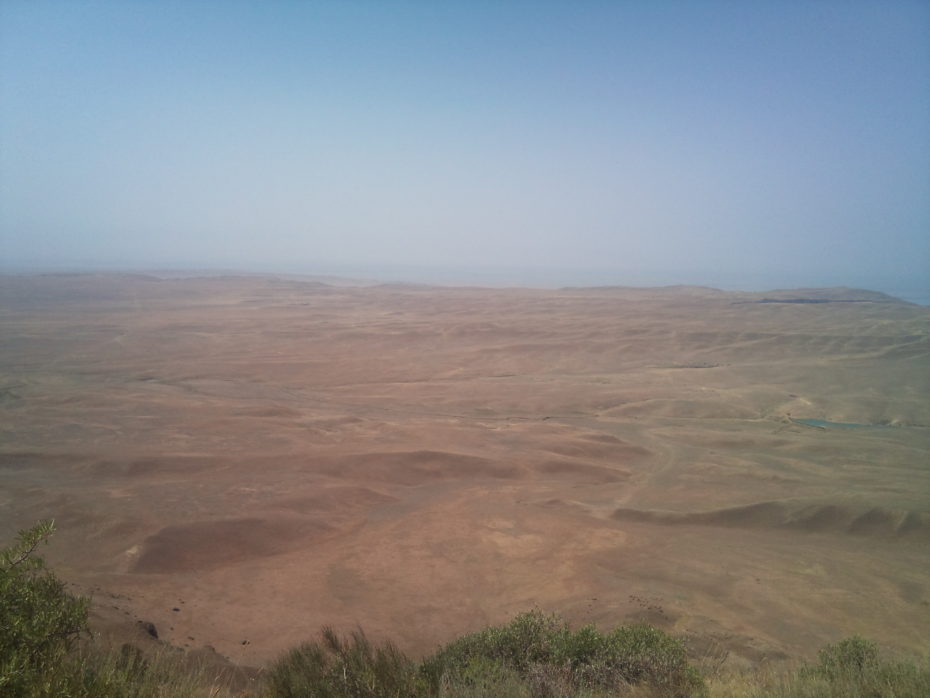
Looking into Azerbaijan © Jennifer Walker
Once Georgia regained its independence, the monastery once again became a place of pilgrimage and home to some six monks. Visiting the complex however is difficult, as the border between Georgia and Azerbaijan clumsily cuts through the site, with parts of the Georgian monastery falling into Azerbaijan, causing minor border disputes between the two countries. But a visit to the main part, Lavra, and the frescos of the Davit Gareji school, lies securely within Georgia.
An Ancient Moonscape Metropolis: Uplistsikhe (“Lord’s Fortress”)
The bus from Gori, Stalin’s hometown, dropped me in a nearby village of Kvakhvreli. I had a long walk down a dusty path to this rock-hewn town whose origins date back to around 1000 BC.
Its milk white stone, polished over the years by countless footsteps and hand-brushing of the walls, may resemble an arid moonscape. Uplistsikhe is unfamiliar and ancient, and from the 6th century BC, it marked one of the most important cities in the region for an incredible 17,000 years. Even with its prehistoric roots, it still remained a hub of Georgian culture up until the 13th century.
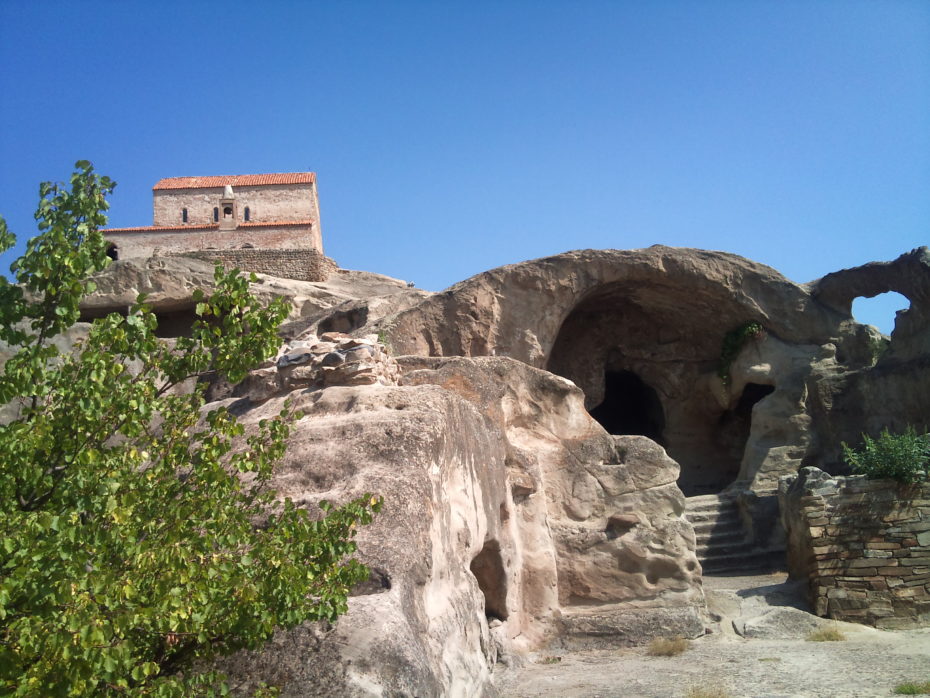
The church on the top of the Upslistiskhe city is a more “modern” addition to the once pagan city © Jennifer Walker
Before Georgia became the world’s second Christian country in the world after Armenia, archeological evidence points to Uplistsikhe’s inhabitants as having worshipped a sun goddess.
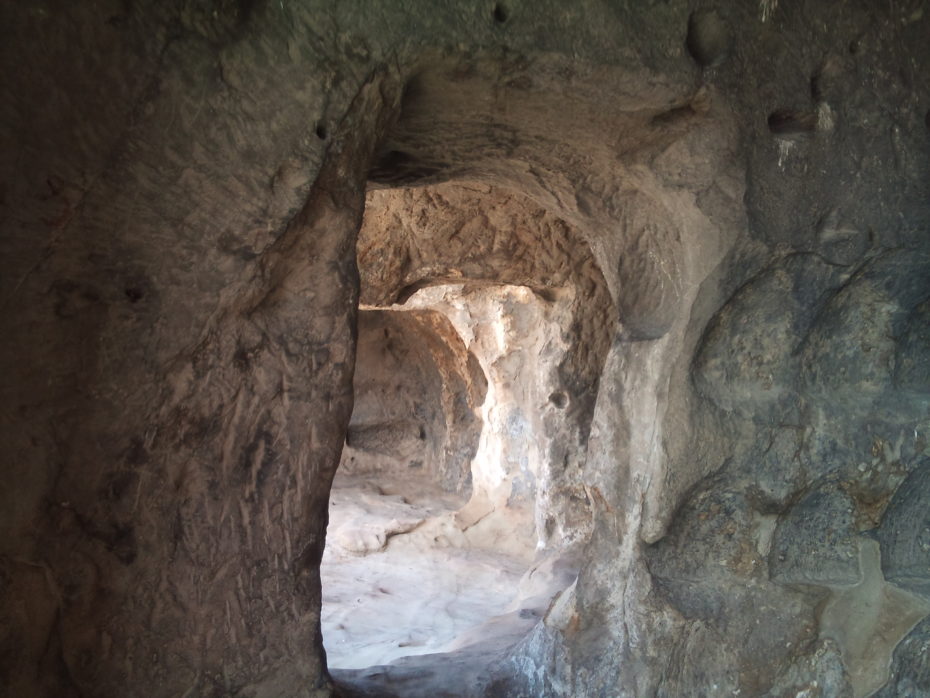
One of the many cave cells and tunnels in the city © Jennifer Walker
The town has several layers, various tunnels and passages link buildings together, and a main escape tunnel plunges down to the lower town through the rock towards the Mtkvari River. While Georgia was under Muslim conquest, the rock-carved city morphed into a refuge for Christian kings, supporting 20,000 people until Tbilisi’s recapture in the 12th century. The Mongol conquest in the 13th century, the same one that damaged much of Davit Gareji, destroyed much of the remaining town, only leaving behind the caves and cells you can still see today.
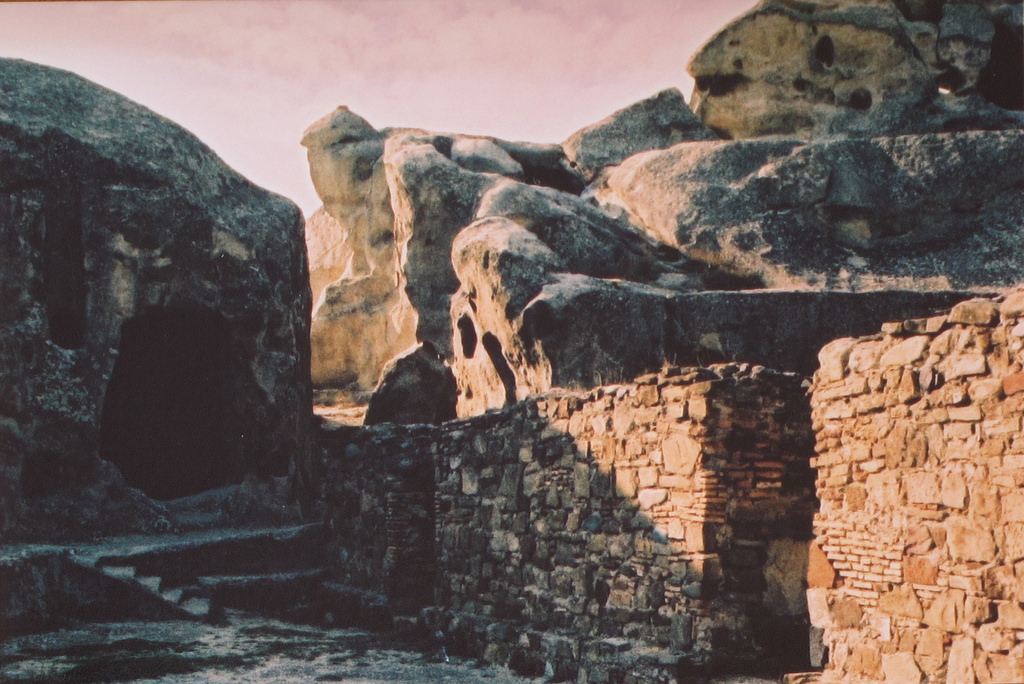
© Cuthbert
It feels impossible to imagine this abandoned city, which spans around 40,000 square metres, as having been inhabited for thousands of years, yet the traces in the grooves of the smooth rock testify to the thousands if not millions of footsteps that once made those paths and climbed those steps.
Vardzia: The Queen’s Underground City
Vardzi hangs high above the valley, its cells and caverns going up 13-storeys high into the rock, from tiny store rooms to grand halls once belonging to a “Mountain Queen”.
To survive an invasion, Georgian Queen Tamar ordered the construction of an underground city in the 1180s to defend her people against the Mongol invasion. The city was formed by digging downwards and carving into the rock itself to create an epic cave-
cut metropolis that spanned 13 levels with circa 6000 apartments, a chapel with a bell tower, a throne room, and many hidden tunnels and passages interconnecting them inside.
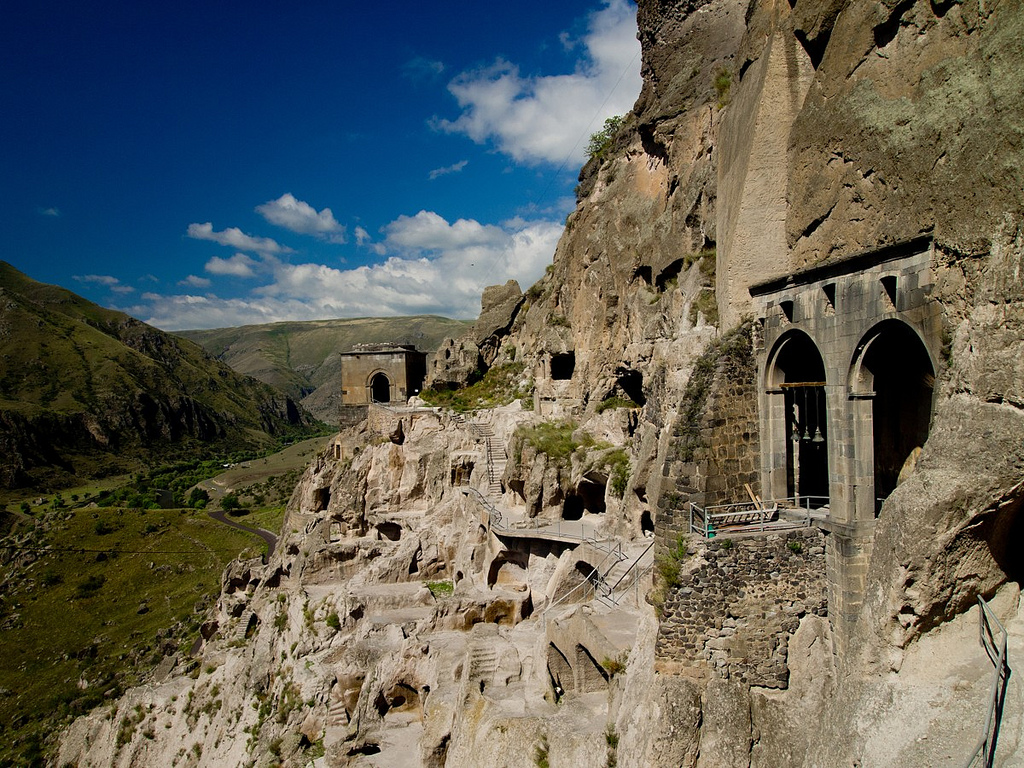
This rocky fortress successfully withstood the Mongol forces, but in 1283, one hundred years after its completion, it was mother nature who pillaged Vardzia in an earthquake that destroyed the exterior, exposing the inner halls and cells to the elements. Only a third of the city remains, open on the surface of the Erusheti Mountainside.
Three hundred of the original cells and halls remain in the sight, and it requires quite a climb to scale the city to its hidden cells. Frescoes can still be seen under the walls once blackened from candle or torch light and the bells of the church tower still echo across the valley.
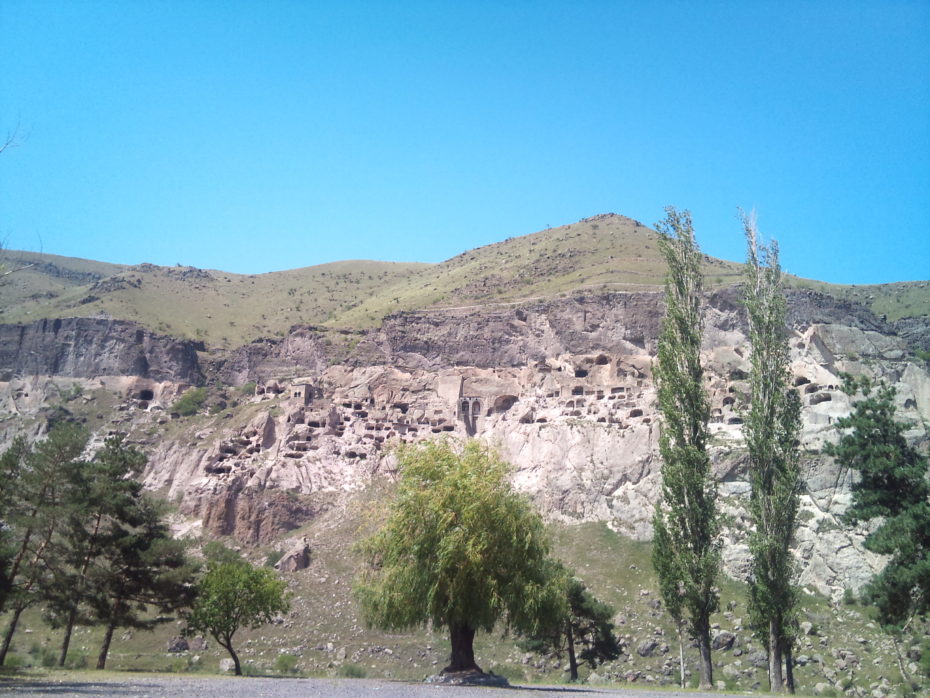
Vardzia from afar © Jennifer Walker


